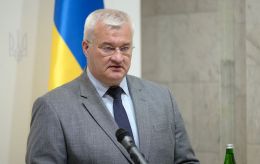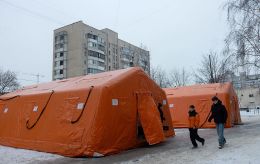Details about Putin's wunderwaffe and possibility of Russian Federation launching Zircon missile at Kyiv
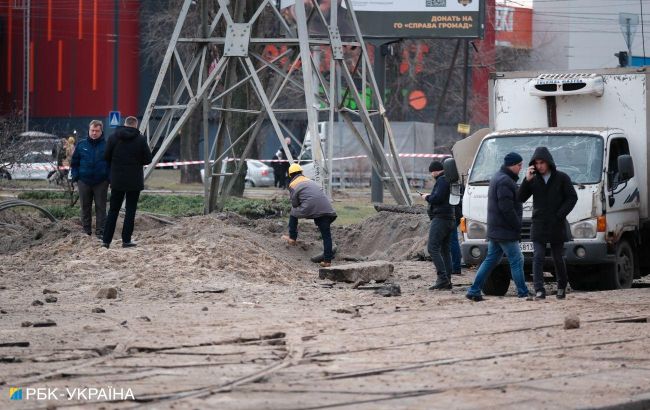 Russians could launch a Zircon missile towards Kyiv (photo: Vitalii Nosach, RBC-Ukraine)
Russians could launch a Zircon missile towards Kyiv (photo: Vitalii Nosach, RBC-Ukraine)
During the morning attack on Kyiv, Russians may have launched the hypersonic missile Zircon, which has officially never been used in combat conditions, and it is likely that Ukrainian Air Defense Forces shot it down. Russian dictator Vladimir Putin personally boasted about this superweapon.
Here are details about the Zircon missile and whether Russians could indeed have used it to attack Kyiv.
This information is based on articles from Russian media outlets, Defence Express, and an exclusive comment from aviation expert Kostiantyn Kryvolap.
What is the Zircon missile
The 3M22 Zircon missile is a Russian hypersonic anti-ship missile designed to replace the heavy anti-ship missile P-700, developed in the 1970s-1980s.
Little is known about the technical characteristics of the Zircon, but based on Russian statements, the following is known:
- strike range: 600-1000 km;
- flight speed: up to 9 Mach;
- warhead mass: 300-400 kg;
- length: 8-10 meters;
- propulsion: two-stage (first stage solid-fuel, second stage air-breathing).
The missile can be launched from both ships and the coastal defense system Bastion. Additionally, the possibility of launching the Zircon from the underground coastal missile system Object-100 in Crimea cannot be ruled out.
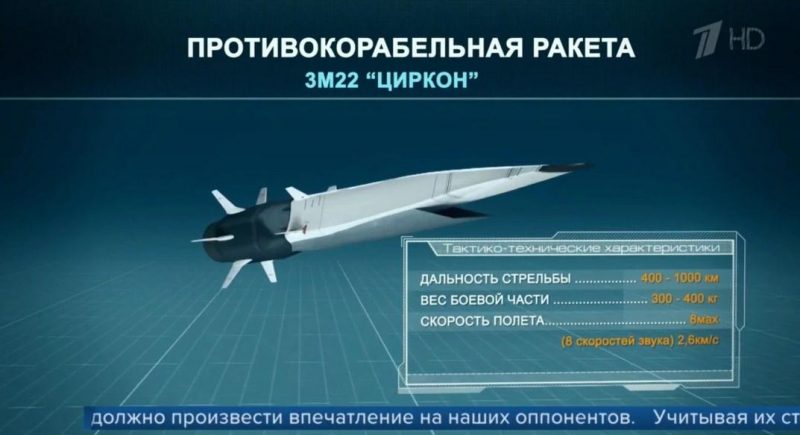
Photo: The Zircon missile (defense.ua)
Another Russian wunderwaffe
Putin presented the Zircon in 2019 as the latest Russian development, but according to Kostiantyn Kryvolap to RBC-Ukraine, the Russian dictator then showcased a completely painted American prototype of the X-51 missile.
"When Putin presented it in 2019, an American hypersonic missile X-51, or rather its prototype, was shown. The Americans started this program around 2005. The Russians started later but set ambitious goals - a speed of 10 Mach and so on," he said.
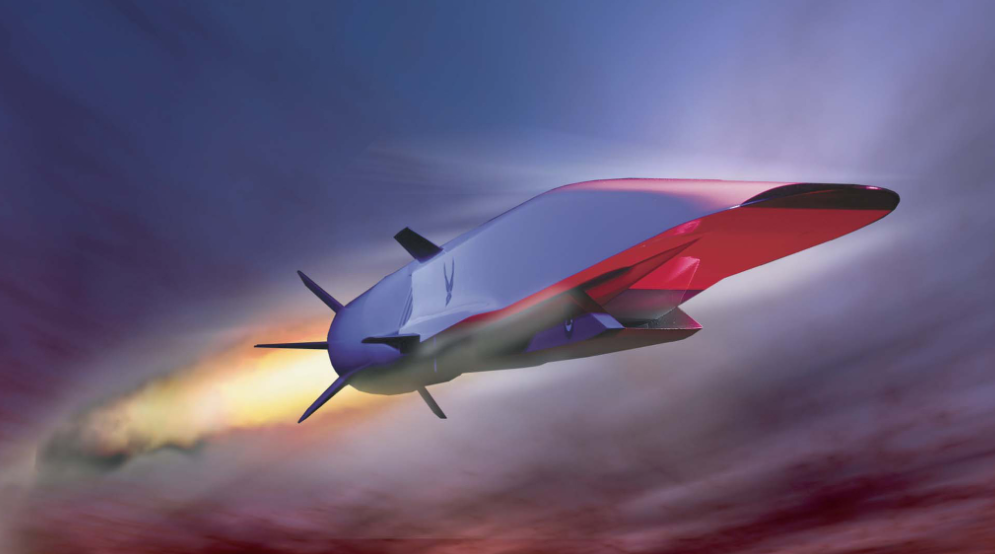
Photo: American prototype of the X-51 missile (defense.gov)
In addition to the claimed speed, even exceeding that of the American prototype, the Russians purportedly equipped their Zircon with an ultra-precise homing head. However, according to Kryvolap, the veracity of this claim is questionable because all anti-ship missiles use the same guidance mechanism.
"You cannot rely on the terrain features; you may encounter GPS jamming; the missile flies on a ballistic trajectory, and when it approaches the target, the optical guidance head activates, comparing images from different angles. This guidance system is very complex because the missile complex itself must have very high computational capabilities to compare images from various angles and altitudes," the expert noted.
As explained by Kryvolap, during hypersonic flight, a plasma cloud forms around the missile, hindering radio signal transmission, which complicates both the detection of the missile using radar and the missile's guidance system.
According to Kryvolap, questions also arise regarding the claimed air-breathing engine of the Zircon. The thing is that development of such an engine has been pursued by various countries, including the Soviet Union, since the second half of the last century, but since then, no significant progress has been made.
"Since then, there hasn't been significant progress; many factors hindering stable results regarding the ignition and operation of the engine. Americans and other countries working in this direction have faced this problem," the expert stated.
Overall, the Zircon appears to be another Russian wunderwaffe or wonder weapon, whose actual capabilities do not correspond to the stated characteristics. Illustrative of this is the fact that on the eve of the first anniversary of the invasion of Ukraine, Putin announced the mass production of these missiles for the Russian army. However, as Kryvolap noted, as of May last year, it had not yet begun. It is worth noting that according to publicly available data, only four American X-51 missiles, from which the Zircon was depicted, were produced.
Even the Russian Wikipedia acknowledges the possibility of intercepting the Zircon with modern Western air defense systems such as THAAD, S-300, S-400, S-500, SM-3, SM-6, GBI, PAAMS, and SAMP/T (with the Aster 30 missile). Russians have acknowledged that these air defense systems can intercept targets flying at higher speeds, but supposedly, considering the maneuverability of the Zircon, the likelihood of interception is not high.
Whether the Zircon launched towards Kyiv
After the morning shelling of Ukraine, the Defense Express portal published an article suggesting that the Russian Zircon missile was likely shot down over Kyiv. However, the Air Force reported the downing of only three Kalibr missiles and 26 cruise missiles X-101/X-555/X-55.
Evidence of the potential use of the Zircon emerged from photographs of debris found at the site where one of the downed missiles fell. The markings on the debris corresponded to the code name 3M22, which is associated with the Zircon missile.
However, Defense Express clarified that the debris found today matches the debris of another unidentified missile that Russia used earlier this year. Regarding the other unidentified missile, there was also speculation that it could be the Zircon.

Photo: Debris of an unidentified missile shot down over Kyiv (Defense Express)
On December 29, the Zaporizhzhia Regional Military Administration also claimed an attack by a Zircon missile. At that time, the Air Force did not confirm which missiles the enemy had used, but in conversation with RBC-Ukraine, the Zaporizhzhia Regional Military Administration stated that, according to their available data, it was indeed the Zircon missile.
According to Kryvolap, it is currently difficult to say whether the Russians did indeed attack Kyiv with the Zircon missile, but the size of the crater from the missile's impact and reports of its ballistic flight from the south towards the capital suggest that such a possibility cannot be ruled out.
However, as Kryvolap emphasized, if the Zircon were indeed traveling at the speed claimed in its technical specifications, it would have been unlikely to be detected even by modern radar systems. Questions also remain regarding the launch site of the missile, as the carrier of the Zircon, the Admiral Gorshkov ship, is not located in the Black Sea.
"I would be very cautious about this report. There is one detail that carriers capable of launching, for example, the Kinjal, were not detected. However, there is a nuance: six Tu-22M3 aircraft took off, but they launched only four Kh-22 missiles. Perhaps they adapted this missile to these aircraft. Theoretically, they could have launched it from the ground. Maybe from the Bastion or Object 100," he added.
Furthermore, it is unclear how many Zircons were produced in Russia, as their production had not been initiated as of last May.
"They might have had 4-5-10 of these Zircons made for test launches. At this stage, it's all speculation," concluded Kryvolap.
Massive shelling of Ukraine on February 7
This morning, occupants launched missiles at Ukraine from strategic aviation. Our air defense system successfully intercepted a total of 44 enemy targets, including 15 drones that Ukrainian forces had been tracking since last night.
The missile attack primarily targeted Kyiv, although Mykolaiv and the Lviv region were also hit. In the Holosiivskyi district of Kyiv, a multi-story building was ablaze, while electric networks were damaged on the left bank. Overall, over 40 people were injured, and four lost their lives as a result of the morning attack on Kyiv.
For more details on the aftermath of the mass attack, read the article by RBC-Ukraine.
